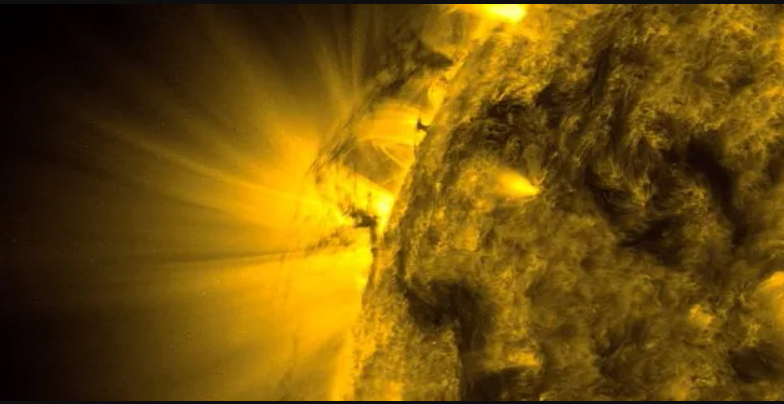On Earth, furiously whirling air columns or tornadoes are terrifying enough. Imagine, though, a comparable event comprised of lethal plasma vortices controlled by the Sun’s magnetic fields – that sounds horrible, doesn’t it?
The Solar Dynamics Observatory captured an enormous solar tornado near the Sun’s north pole last week. And scientists were able to see its uninterrupted growth and twisting for three days, until it reached a height of 120,000 kilometers, or 14 Earths.

Thankfully, the solar debris did not strike Earth.
Solar tornadoes are occasionally observed when solar magnetic fields swirl violently, pulling clouds of plasma along with them. Yet, space weather aficionados assert that they have never seen one that enormous.
On March 18, this tornado ultimately overtorqued itself after spinning out and ejecting a cloud of magnetized gas into space.
On March 20, however, the interplanetary magnetic field (IMF) close to Earth abruptly turned around 180 degrees. These magnetic ripples are common indicators of a nearby CME (coronal mass ejection). Inside the Arctic Circle, colorful auroras were lit by the “ripple effect.”
But if you missed the event, have no fear! The moment is ideal for more solar activity, and aurora chasers will have another chance to photograph the northern lights.
Friday will see a G2 geomagnetic storm impact Earth.
According to spaceweather.com, a big hole has formed in the Sun’s atmosphere, which is shooting solar wind towards Earth.
Friday, solar winds from this “coronal hole” — an area in the solar atmosphere where magnetic fields are weakened and wind may escape — will reach Earth (March 24).
This might cause a G2-class geomagnetic storm on our planet on Friday, resulting in beautiful auroras. According to the Russell-McPherron effect, since this event occurs just a few days after the vernal equinox, even a little gust of solar wind around the equinoxes can trigger an impressive display of high-latitude auroras.
‘Moderate’ G2 storms may also generate voltage alerts in high-altitude power networks and transformer damage if they linger too long. They might potentially interfere with satellite operations and high-frequency radio transmissions. Hence, cell network and internet access may be affected.
Recent times have witnessed a burst of explosive activity on the star of our solar system, as the Sun approaches the peak activity phase of its 11-year solar cycle. And specialists will continue to monitor solar activity, as geomagnetic storms of greater intensity can have considerably more severe consequences. They can not only distort our planet’s magnetic field sufficiently to cause satellites to crash to Earth, but they can also damage electrical infrastructure and even bring the internet to a halt.

